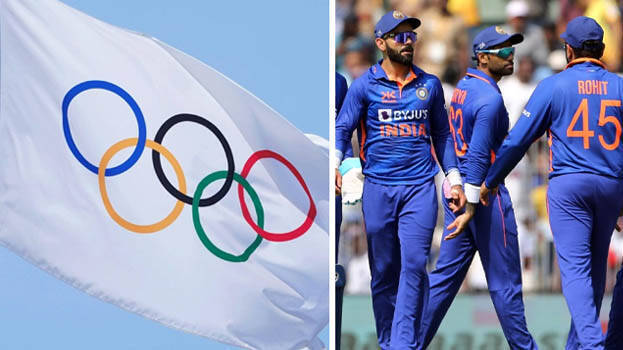WHEN the International Olympic Committee (IOC) announced in October 2023 that cricket would be included in the 2028 Los Angeles Olympics, it was hailed as a landmark moment for the sport. The decision marked cricket’s return to the grandest stage of all after an absence of 128 years.
For a sport that boasts a staggering 2.5 billion fans worldwide, its Olympic exclusion had always been an anomaly. But with the world evolving and the Olympics struggling to capture newer audiences, one has to ask: Is this about genuine global sporting spirit, or is it just another commercial maneuver by the IOC?
The Economics of Cricket’s Olympic Inclusion
At first glance, bringing cricket into the Olympics seems to be a strategic masterstroke. The sport has a massive following, particularly in India, Pakistan, Australia, England, and South Africa. More importantly, with the Indian Sub-Continent diaspora spread across the U.S., the Caribbean, and beyond, the IOC recognized that it could tap into an existing, passionate audience rather than having to cultivate a new one.
From a financial perspective, cricket—especially the T20 format—is a goldmine. The Indian Premier League (IPL) alone generates billions of dollars annually, and Saudi Arabia’s recent interest in T20 cricket proves that the format is more than just a game; it’s an economic powerhouse. The ICC (International Cricket Council) and broadcasters know this well, and so does the IOC.
By bringing cricket to the Olympics, the IOC isn’t just adding another sport; it is inviting billion-dollar sponsorships, skyrocketing TV ratings, and an unparalleled global viewership.
The numbers don’t lie. The 2023 Cricket World Cup final between India and Australia amassed an estimated 270 million television and digital viewers. No Olympic event, outside of the 100m sprint final, garners such an audience. So why wouldn’t the IOC jump at the chance to get a slice of this economic pie?
Cricket’s American and Saudi Connection
One of the main reasons behind cricket’s Olympic return is its increasing American appeal. The last T20 World Cup was held last year in USA and the West Indies. While the sport is still in its infancy in the United States, Major League Cricket (MLC) has brought professional franchise-based competition to American soil. The game’s growth among South Asian communities in the U.S. and the Caribbean has positioned cricket as a viable sport in North America.
The commercial potential of India’s massive cricket-loving population makes it an attractive proposition for the IOC. With the Summer Olympics’ broadcast rights being among the most lucrative sports contracts, cricket’s inclusion could boost advertising revenues exponentially, particularly from the Indian subcontinent.
And then there’s Saudi Arabia’s growing interest in the sport. Reports suggest that the Kingdom is ready to invest heavily in cricket, much like it has in golf and football. The Saudi government’s investment into T20 leagues could open doors for cricket beyond the traditional powerhouses. This has given cricket even more global weight, making it difficult for the IOC to ignore.
Is This Just About Business?
While the re-introduction of cricket at the Olympics is an exciting prospect, one cannot help but wonder: Is the IOC using cricket as a financial tool to revive the Games’ declining appeal?
The Olympics, despite their prestige, have struggled in recent years to maintain relevance. Traditional Olympic sports like gymnastics, athletics, and swimming still draw millions of viewers, but new generations prefer shorter, high-intensity entertainment. The success of T20 cricket aligns with that shift. Unlike the traditional five-day Test cricket or even the 50-over format, T20 is tailor-made for the modern viewer—fast, exciting, and unpredictable.
From the IOC’s perspective, cricket is a risk-free investment. Unlike sports that require a gradual build-up of interest, cricket already has a well-established audience. The Board of Control for Cricket in India (BCCI), arguably the most powerful cricket governing body, will ensure that Indian participation in the Olympics leads to massive engagement, sponsorships, and television rights sales. If the Olympics were struggling for financial sustainability, cricket could be the billion-dollar solution.
Cricket’s Olympic Future: A Sporting or Business Decision?
With cricket’s return, the Olympics might witness an unprecedented surge in viewership and revenue. But is this truly about sporting spirit, or is it just a clever economic ploy?
Purists may argue that cricket doesn’t need the Olympics. After all, it already has its own World Cups, leagues, and bilateral series. But if the Olympics are about uniting nations through sport, then cricket, with its passionate following across continents, deserves a place.
However, the suspicion remains that the IOC’s motives aren’t purely noble. It’s about capitalizing on the financial juggernaut that cricket has become. With India’s economic clout, the explosion of T20 leagues, and Saudi Arabia’s involvement, cricket’s Olympic inclusion feels like a business decision disguised as a sporting one.
A Double-Edged Sword?
Cricket fans will welcome its Olympic return, but at what cost? If the IOC sees cricket as merely a commercial pawn, will it truly commit to the sport’s long-term Olympic journey? Or will it be a one-time engagement to cash in on India’s billions and America’s growing cricket culture?
For now, we celebrate cricket’s return to the Olympics. But let’s not be naive. The Olympics have gained more from cricket than cricket has from the Olympics. The real test will be whether cricket remains part of the Games beyond Los Angeles 2028, or if it was merely a one-time cash grab by the IOC.
After all, in the modern sporting world, passion and profit often go hand in hand—but which one ultimately takes precedence?
(The Writer is based in Doha, Qatar)











